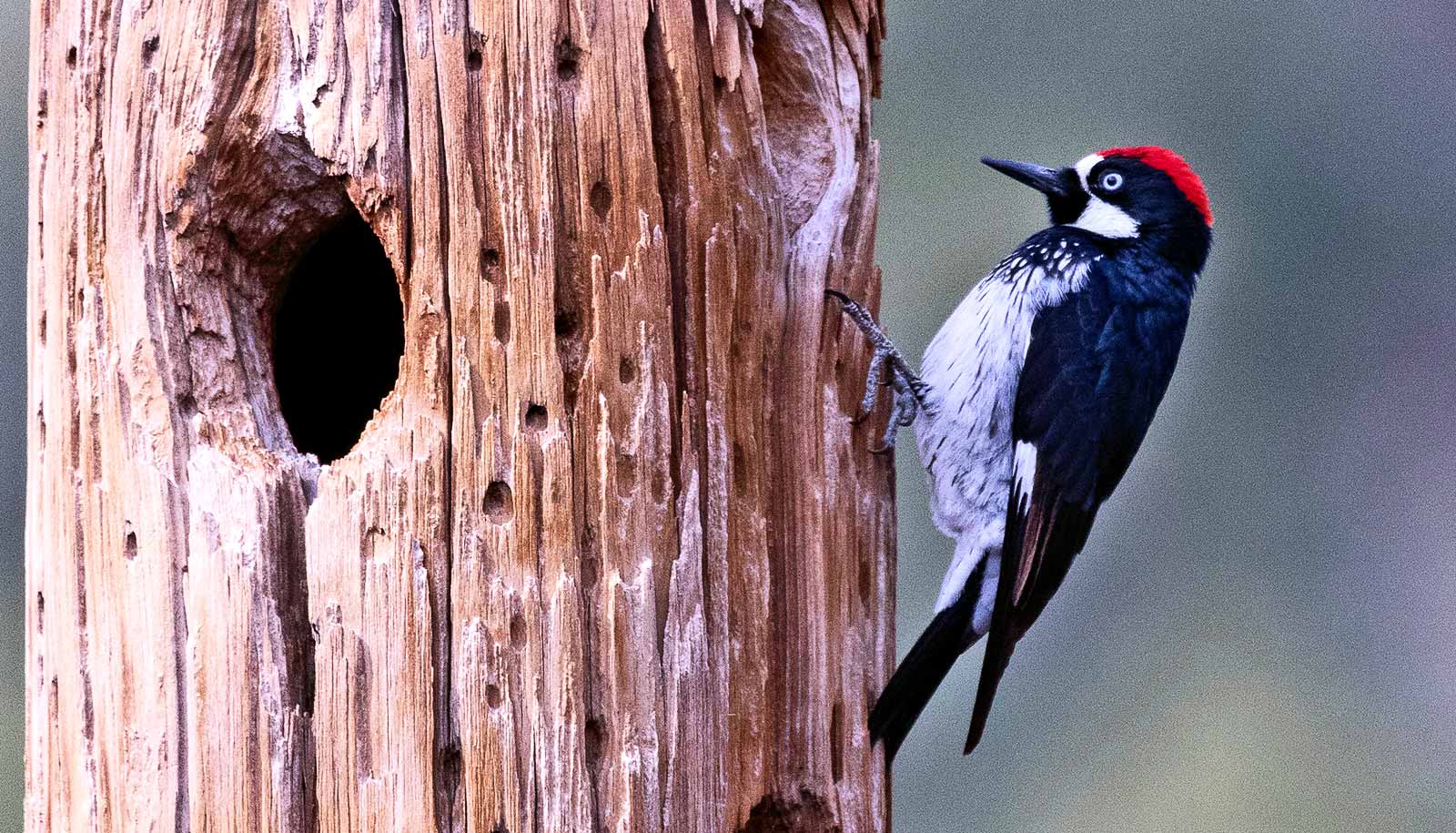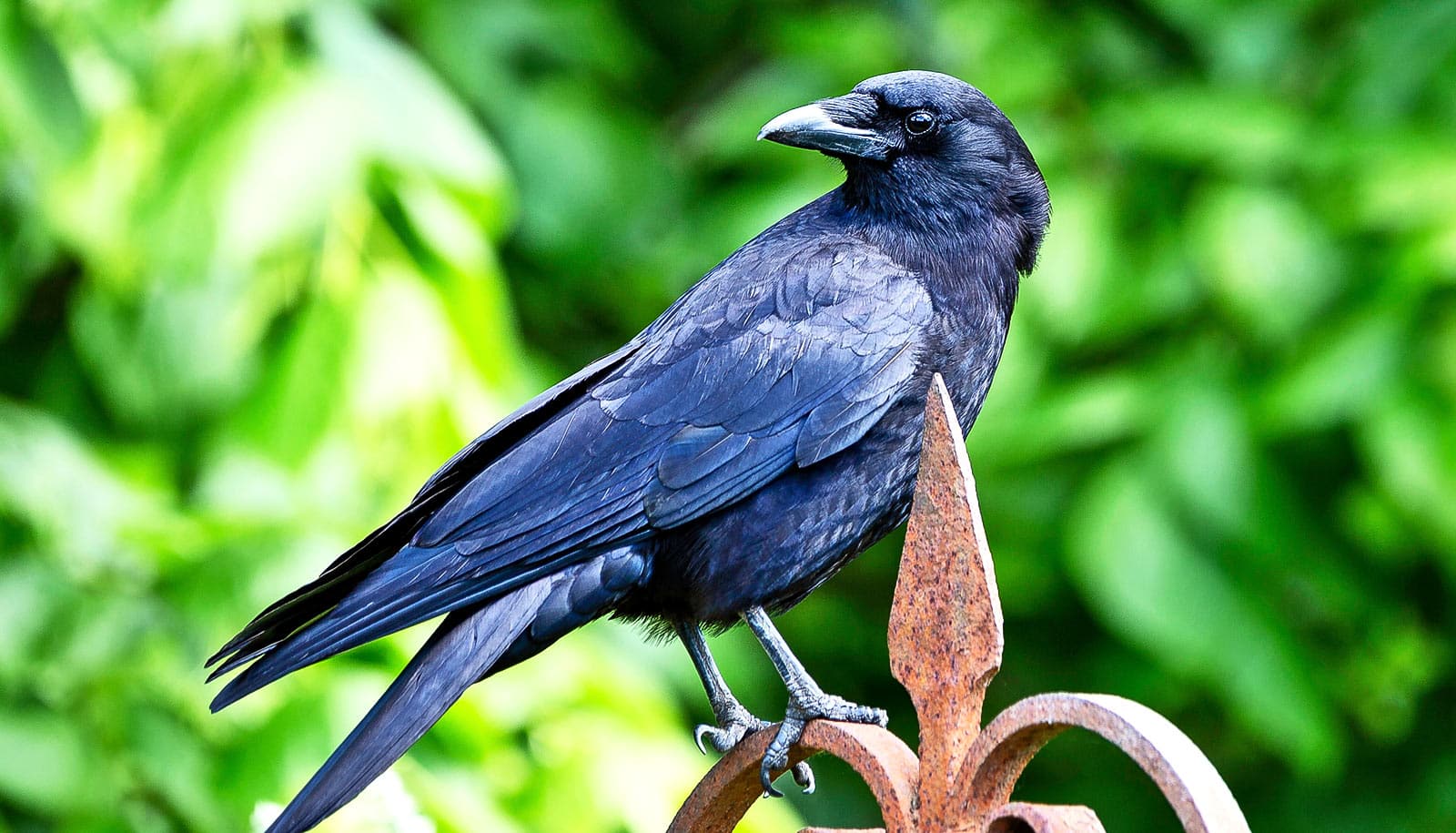
There are over 200 species of woodpeckers around the world, and each species drums at a specific speed and rhythm that changes depending on what they want to communicate and to whom. (Credit: Dulcey Lima/Unsplash )
Brain evolution clarifies why woodpeckers peck
The specialized brain area that helps songbirds learn songs also exists in woodpeckers, suggesting their communicative rat-a-tat-tat evolved the same way.
Researchers say they’ve discovered new insights into how the woodpecker’s brain works.
A woodpecker’s drumming may have evolved through vocal learning, the same way that songbirds learn to make their own more melodious songs, their new study suggests.
While a woodpecker’s bill-hammering is a familiar sound—and sometimes too familiar, for those who’ve had a woodpecker take up residence in their yard—the mechanisms and motivations driving the birds to engage in this behavior haven’t been well understood. Until now.
In the study published in PLOS Biology , the researchers describe how they found evidence of specialized gene expression in the forebrains of woodpeckers that was anatomically similar to that of birds who communicate by singing.
The researchers hypothesize that the same brain mechanisms that helped birds develop the motor control involved in creating and voicing songs is also what helped woodpeckers develop their drumming system of communication.
“With the hammering, the woodpeckers are basically telling each other, ‘Get out of my territory!'”
This discovery expands what is known not just about woodpeckers, but about the evolution of birds in general, says study author Matthew Fuxjager, an associate professor of ecology, evolution, and organismal biology with the biology and medicine division at Brown University.
“Very little is actually known about woodpecker drumming to begin with, and certainly nobody has ever found a neurological explanation for the drumming behavior,” Fuxjager says. “More broadly, what’s really exciting about this study is that this is the first time a neural basis has been found for gestural communication of any animal—outside of humans, chimps, and gorillas, that is.”
Woodpecker warnings
Much of the research on animal communication focuses on vocalizations, says Fuxjager—for example, frogs calling or birds singing. In his research, Fuxjager studies how animals use body movement and gesture to communicate, such as jumping up and down, waving, or performing a type of ritualized dance.
“A lot of my research has looked at how these movement behaviors have evolved—specifically, how the brain and muscles have evolved together to support these types of displays,” he says.
Woodpeckers are an excellent candidate for area of inquiry because their hammering is a form of signaling, Fuxjager says. “With the hammering, the woodpeckers are basically telling each other, ‘Get out of my territory!'”
Fuxjager was primarily interested in how the woodpecker’s brain controls that behavior. He teamed up with Erich Jarvis from Rockefeller University, who had screened different bird species looking for brain regions that anatomically resembled those that controlled song—including birds not known to sing, like the emu, penguin, flamingo, and woodpecker.
“I was interested in the brain regions that would control drumming, and Jarvis was interested in the song control regions,” Fuxjager says. Coauthor Eric Schuppe, at the time a PhD student in Fuxjager’s lab, participated in field work to see if the special areas in the woodpecker brain were, in fact, related to drumming.
In the lab, the team searched for signatures of the same gene expression specializations in seven species of birds. They found evidence of specialization only in the woodpeckers—these were the only non-songbirds that possessed forebrain regions that were anatomically similar to the song systems in birds known to use vocal learning.
The researchers therefore hypothesize that the ancient forebrain nuclei for refined motor control may have given rise not only to the song control systems of the vocal learning birds, but also the drumming system of the woodpeckers.
Woodpeckers drum in different ‘languages’
In explaining the importance of the drumming, Fuxjager notes that there are over 200 species of woodpeckers around the world, and each species drums at a specific speed and rhythm that changes depending on what they want to communicate and to whom. “So they’re hammering in coordinated bursts,” he says.
And if a woodpecker does it wrong, then the other woodpeckers of that species won’t be able to recognize or understand it—they won’t get the message.
“But if they get the parameters right, the other woodpeckers will listen to the drum, measure certain aspects of it and use that to assess the drumming woodpecker as a competitor,” he says. “They’ll be able to understand what they’re trying to communicate. The specialized brain regions coordinate the physiology that controls the movements that allow the birds to peck in certain ways.”
These findings broaden the understanding of brain regions specialized for vocal communications in birds, Fuxjager says.
“This prompts us to rethink how these characteristics evolved: Was it just something that happened in these particular species of birds, or does it hint at something farther back in the evolutionary history of birds, in general?”
Future research will dive deeper into these questions, he says.
The National Science Foundation funded the work.
Source: Brown University
The post Brain evolution clarifies why woodpeckers peck appeared first on Futurity .
Share this article:
This article uses material from the Futurity article, and is licenced under a CC BY-SA 4.0 International License. Images, videos and audio are available under their respective licenses.
Related Articles:
Brain evolution clarifies why woodpeckers peck
Sept. 21, 2022 • futurityBig brains and bodies let crows and ravens take over the planet
April 22, 2022 • futurityLinks/images:
- https://doi.org/10.1371/journal.pbio.3001751
- https://www.futurity.org/dinosaur-extinction-birds-evolution-1553422/
- https://www.futurity.org/birds-brains-size-2147602/
- https://www.futurity.org/birds-rhythms-parkinsons-disease-language-2622512/
- https://www.brown.edu/news/2022-09-20/woodpeckers-0
- https://www.futurity.org/woodpeckers-brains-evolution-communication-2802752-2/
- https://www.futurity.org

